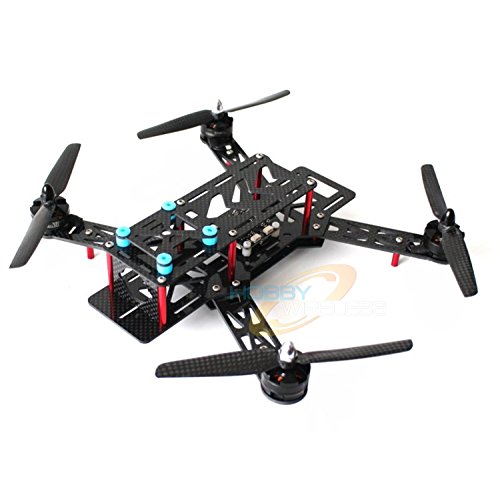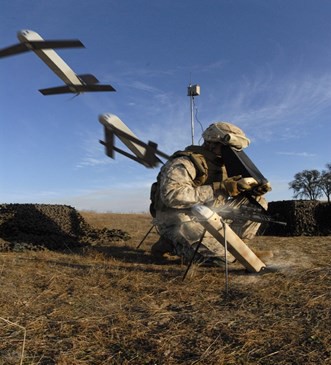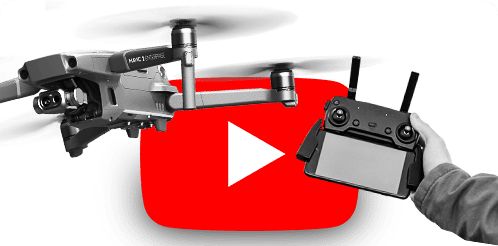
It is helpful to know the main issues surrounding industrial drones in order to understand the future. We'll be talking about Regulations. Sensors. Application. The Future. We will also address the challenges involved in their development. This article will provide a brief overview of these issues as well as discuss ways industry ecosystems can support the industry's growth. After all, these drones can transform our world for the better. These drones can ultimately improve productivity, save lives, and lower costs.
Applications
With its wide range of capabilities, industrial drones have a wide range of uses, including disaster relief, construction, and inspection. Also, drones can be fitted with sensors, such as ultrasonic distance and lidar sensors. Other types of sensors include time-of-flight and chemical sensors. Multispectral sensors record data at visible and infrared wavelengths. Visible sensors can capture video and still images. Thermal sensors can monitor hot spots and detect security threats.
Drones are also useful in helping with operations. This can save time and money. This technology can rescue humans from potentially hazardous situations, aid in traffic control, measure levels of pollution, or perform other tasks. These drones are versatile and growing in popularity. Drones are often used for dangerous or hazardous tasks, but they can also be used in entertainment and advertising. Commercial drones can be used to fly banners and perform light shows.
Sensors
Today, industrial drones are capable of flying over worksites to collect data. Drone sensors can detect chemical compositions and ambient conditions. They can also inspect structures and infrastructures, such as pipelines, bridges, and power generation facilities. A sensor pod can contain multiple sensors that can be mounted on the drone. For greater control, the drone can be controlled remotely by a pilot or remotely. In both cases, sensors aid the industrial drone to achieve its mission and provide valuable data.

Multispectral sensors are particularly useful for foresters, as they can distinguish between bushes from trees. A hyperspectral sensor can offer up to 200 spectral band per pixel. These types of sensors provide more information than ever and can collect data up to terabytes each flight. Multispectral scans typically use a push or whisk-broom technique.
Regulations
Companies operating industrial drones have to follow the regulations. The National Business Aviation Association has prepared a guideline for drone operators. This guide includes key findings that were gathered from trials carried out by the CAAC. The CAAC trials have shown that drone regulations must consider weight, risk classification, and management system. These guidelines address foreign drone operators. However, the guidelines must be implemented by companies, not by the FAA.
Regulators need to be specific about the nature of operations in order not to create a regulatory burden. Many drone operations are carried out in unpopulated airspace, where there is little other aircraft, population, and property. For example, operations like monitoring crops may not warrant the same level of safety regulation as those using drones for agricultural purposes. Operators must demonstrate they have the necessary experience and that they are willing to invest in technology. Although regulations regarding industrial drones need to be flexible, they shouldn't hinder the development of the U.S. drone industry.
Future
Many fields are seeing the rise in industrial drone use, including agriculture and construction. They are used in disaster zones and pesticide spraying. Drones can also be used for construction and power line inspection. Industrial drones could one day be used to inspect powerlines or assess the land's quality. There are many possibilities for industrial drones. To make use of these innovative technologies, you should read on to learn more about these developments.

In the near future, drones in industrial applications could reduce costs and increase efficiency for businesses. They are cost-effective and efficient, and can also improve accuracy and customer services. They can also solve global security challenges. Drone technology is no longer a trendy trend. More businesses are realizing the benefits of these drones. These drones have already proven their value and will continue to increase productivity.
FAQ
Can my drone be flown in my local park?
You can fly drones in parks around the globe. Safety concerns mean that not all countries allow drones to be flown in parks. Our list contains places where drones are legal to fly for enjoyment.
Is it possible to fly my drone in my backyard?
Yes! These are also known as UAVs (unmanned aerial vehicle). There are many different types of drones that you can buy today, including small quadcopters as well as large fixed-wing aircraft. The FAA recently updated its rules regarding commercial UAV use. You can now legally fly them to business purposes. Be aware that UAVs operating near airports could cause interference to air traffic control systems. You must get permission from the authorities before you can fly one.
What are the rules for operating drones?
You need to register your drone with the FAA. You will need to submit information about your drone including its weight and size as well as operating frequency. You will also need to get an FAA identification number.
What laws apply to drones flying above private property?
New rules have been issued by the FAA for commercial drone flying. These rules apply only to UAVs weighing less than 55 pounds and flying below 400 feet above ground level. Commercial operators need to register with the FAA in order to obtain a license. They will also require permission from local authorities to operate near airports and other restricted areas.
What is the difference of a quadcopter and an hexacopter, you ask?
A quadcopter can be described as a quadrotor helicopter with four rotors. It flies the same way as a traditional helicopter. The quadcopter has four independent rotors. The hexacopter looks similar to a quadcopter, but it has six rotors rather than four. Hexacopters are more stable and maneuverable than quadcopters.
Can I fly my drone indoors
Yes, you can fly your drone indoors. There are only a few things you need to do: Make sure your home is free of obstacles and hazards. Avoid flying near windows, doors and heating vents.
What US states have drones made legal?
You can legally operate a drone for hobby purposes. The Federal Aviation Administration (FAA), established guidelines that allow individuals to fly small unmanned aircraft systems. Before UASs can be flown, they must be registered with FAA. If certain conditions are met the FAA will allow commercial operators to fly these drones.
Statistics
- With the top 10% making over $100/h and the bottom 10% making as low as $10/h. (dronesgator.com)
- According to industry research from ZipRecruiter , there are 10 cities where the typical salary for a Drone Pilot job is above the national average. (dronesgator.com)
- According to Indeed, a drone pilot gets paid $25.73 per hour on average in the US. (dronesgator.com)
External Links
How To
How do you clean your drone?
These are some of the things you need to know before cleaning your drone. This guide will show you how to get every bit of your drone's potential.
-
Make sure you have the right tools. Be sure to have everything you require before you begin any task. You will need a soft toothbrush (or a brush) and a cleaning product (we recommend WD40).
-
Disconnect the battery pack. First, remove the battery pack from your drone's bottom. It is often easy to find the battery beneath the propeller. Be careful not to loose screws during removal.
-
Remove all components. Next, carefully remove all the parts from under the drone. Be sure to secure all parts securely, or they could come off as you clean the drone.
-
Use a cleaning product. Now, clean your drone. We recommend that you use WD40 as a cleaning agent before doing this. Spray the entire surface of the drone with the cleaner. Make certain to get in between components. Leave it to dry completely before putting everything back together.
-
Put on the battery. It's crucial to place the battery after you have cleaned your drone. That way, you'll be able to test how well your drone works after being cleaned.